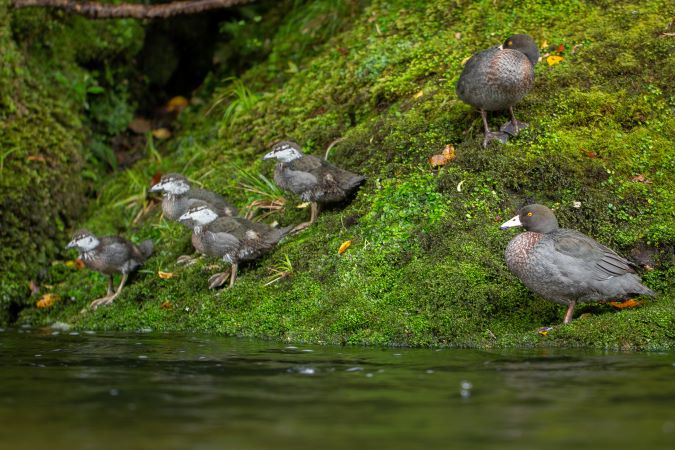It has been a busy year on the Eastern Whio Link situated in the Upper Waioeka Catchment between Gisborne and Opotiki. The project has grown from a small hunter, farmer, fisher & mana whenua-led project, which protected the few remaining pairs of Whio (Blue Duck) in the catchment, to take on much more.
Volunteers have been successfully chipping away to expand the trapping network to protect the 20 chicks that were fledged last year. Now the project footprint covers almost all the available Whio habitat in the entire 25,000ha catchment.
It was recently announced Eastern Whio Link were successful applicants in the 2021 Jobs For Nature funding stream from Ministry for the Environment. This will allow them to complete the Whio network and establish 4,000ha of stoat control to surround an on-farm Kiwi population.
Earlier in the year students from Toi Ohomai Institute of Technology travelled from Tauranga to do a large landscape acoustic monitor for Bats and Kiwi. There were historical sightings of both by farmers and hunters in the catchment but nobody knew for certain how well they were doing. The results were staggering. Kiwi were dispersed in very low numbers across the entire catchment and there were two species of bat present, both Long and Short Tailed Bats.
The Jobs For Nature funding allows the project to employ a project manager and three trappers which will contribute significantly to increasing both Whio and Kiwi numbers in the catchment.
Eastern Whio Link has partnered with several educational organisations and become an outdoor classroom for more than 200 students.
One of these is Waikirikiri School, which with the help of Tui Keenan have adopted a trap line they service monthly. Eastern Whio Link, alongside Hunting and Fishing Gisborne, is now establishing a gear library of raincoats, sleeping bags, tents and packs so anyone can volunteer on the project, and having the right gear isn’t seen as a roadblock to whanau wanting to access the ngahere.
Another recent initiative of Eastern Whio Link has been to offer Kiwi Aversion Training with the support of NZ Landcare Trust. They brought master dog trainer Willy Marsh up from Central Hawkes Bay for a travelling series offering aversion training to hunters, farmers and all backcountry users. With Kiwi being in low numbers across much of our farmland and bush it is incredibly important we don’t lose them to dog predation. There are two key causes to Kiwi decline: stoats and dogs. Eastern Whio Link are taking care of the stoat trapping but they also wanted to offer aversion training to the region's dog owners.
Many farmers and hunters are reluctant to strap an electric collar onto a dog and hand the controls over to a stranger. That's why they engaged Willy Marsh, he's a hunter, a shearer as well as being NZ’s top aversion trainer. Willy believes strongly in training the dog, not shocking it. Unlike many other aversion training, most dogs pass without getting a shock at all. He uses his knowledge of dogs alongside a slight vibrate or tone in the collar to train the dog to avoid the sight, smell and sound of a Kiwi. It has been a successful series training over 150 dogs, with another 150 dogs lined up for later in the year.
If you would like to get involved with Eastern Whio Link as a sponsor, volunteer or to get your dog aversion training contact Sam Gibson 0277750016 samthetrapman@gmail.com or follow the project on instagram (@easternwhiolink), facebook or on their brand new website

